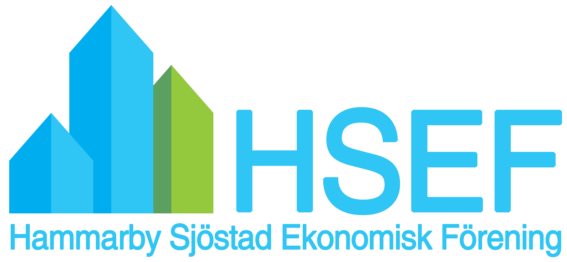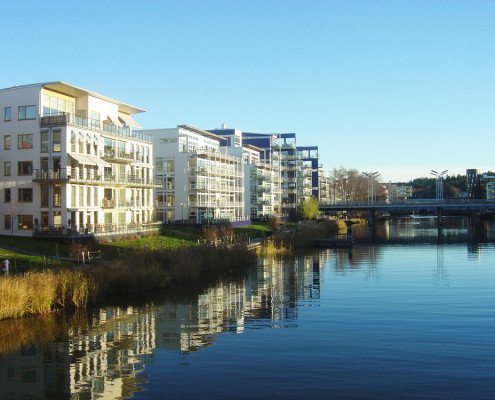An international role model
The water has given its name to the new city district – Hammarby Sjö – the town around the lake where planning work began back in the 1980s. It was here that a unique opportunity to expand Stockholm’s
inner city was envisaged, by converting an old industrial and harbour area into a modern city district. The focus throughout the planning work was on water and eco-friendly solutions. Hammarby Sjöstad now welcomes 13,000 visitors a year from all over the world.
Hammarby Sjöstad is Stockholm’s biggest urban development project for many years. The city district will offer a natural expansion of Stockholm’s inner city – a factor that has influenced the structure, infrastructure, layout and construction design.
The expansion required extensive development of the infrastructure, with traffic barriers removed and the old industrial and terminal areas phased out, concentrated or given a new purpose. Stockholm and Nacka municipalities have agreed on the ways in which the areas on either side of the shared municipal boundary could interact and develop.
Hammarby Sjöstad adds a new “growth ring” to Stockholm’s urban growth – a modern, semi-open block-based city, a combination of a closed, traditional inner city with more modernistic and open planning types. The inner city street dimensions, block sizes, building heights, density and functionality mix are integrated with a new openness, waterfront views, parks and sunlight.
Limited building depths, recessed penthouse flats, maisonettes, large balconies and terraces, big windows, flat roofs and light coloured rendering on water-facing facades embody different applications of a modernistic architecture programme, as does the focus on sustainable materials, such as glass, wood, steel and stone.
Traffic and services are concentrated along a three-kilometre avenue linking Hammarby Sjöstad together, from Mårtensdal to Danvikstull. Parks, quays and walkways have been laid out around Hammarby Sjö itself, while the water areas at the heart of the district comprise a concentrated visual park – the city district’s blue eye.
Taller buildings, facing the water, have been built along both sides of the Hammarby Seaway, in classic city centre style, and interact with large-scale quay facilities and expansive stretches of water.
The milieu at Sickla Udde and alongside Sickla Kanal is more intimate and smaller scale, with its natural beaches. Here, building sizes gradually fade towards the shoreline and then follows the contours of the land as it rises towards the avenues’ crown and Sickla Park.
The housing in Sickla Kaj has a more urban style. Large-scale, multi-functional buildings lie along the avenue, while small-scale, detached front and back courtyard buildings lie between the quays and the Sjöstad parterre, the park promenade.
Hammarby Gård has dense, urban milieus around a lens-shaped park area and a newly created pool.
Lugnet, on the shores of Hammarby Sjö, is home to a waterfront terrace, known as Lugnets Terrass, with jetty decking, pergolas and specially planted areas, adjacent to the avenue. Lugnet is also home to Hammarby Sjöstad’s most special feature building in the form of a latticed cube that is double the height of those that surround it.
The Henriksdalshamnen harbour is among the last of the planned areas in Hammarby Sjöstad. Large numbers of quays are being built out into the water to create, among other things, a harbour basin with space for restaurants and small boats.
The plan is to route the heavily-trafficked Värmdöleden highway along a tunnel through Henriksdalsberget, to extend the Tvärbanan light railway towards Slussen, and to extend the avenue all the way up to a new service centre at Danvikstull.

